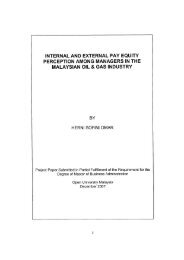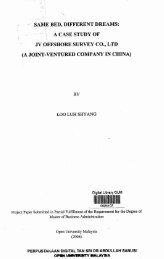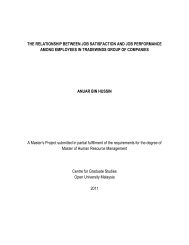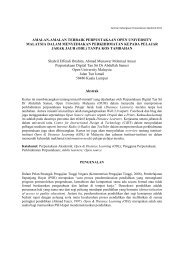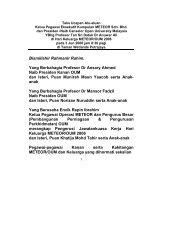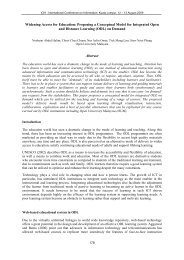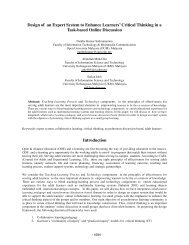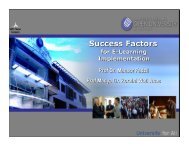Contingent Valuation Method: Valuing Cultural Heritage Chiam ...
Contingent Valuation Method: Valuing Cultural Heritage Chiam ...
Contingent Valuation Method: Valuing Cultural Heritage Chiam ...
You also want an ePaper? Increase the reach of your titles
YUMPU automatically turns print PDFs into web optimized ePapers that Google loves.
identity and continuity. <strong>Heritage</strong> are bound to tradition and also constantly evolving and depends on thecommunity to maintain and transmit them to future generations.<strong>Cultural</strong> goods can be seen where they are have public good characteristics, where indivisibilitycharacteristic prevails. The consumption of publicly-owned goods is identical for all consumers. The othercharacteristic is externality, a source of market failure for heritage goods. <strong>Heritage</strong> constitutes a legacy tobe passed on to future generations known as bequest value. <strong>Heritage</strong> also confers benefits on individualcitizens, who have not contributed to their production or preservation. Moreover, excludability is notalways possible or desirable. Greffe (1999), addressed the question whether to charge a price or not(when possible) on cultural heritage. He analysed price discrimination policies in heritage buildings andsites, emphasizing the lack of clarity due to the large variety of policies.There are characteristics of cultural goods which give rise to their cultural value, aptly named, aestheticproperties, spiritual significance, role as purveyors of symbolic meaning, historic importance, itssignificance in influencing artistic trends, authenticity, integrity, uniqueness and many more (Throsby,2003)3. Economic <strong>Valuation</strong>Although there are aspects of cultural value that cannot be expressed in monetary terms, this does notimply that the implicit cultural value assigned to a cultural good in an economy study is zero. In the past,heritage experts tend to regard economists as being insensitive and heavy-handed, focused too singlemindedlyon financial measurement, and overlooking the true cultural significance of heritage assets(Cannon-Brookes, 1996). There is a distinction value of cultural goods and services between economicand cultural value (Hutter & Throsby, 2008).The definition of benefits as willingness to pay implies the existence of a demand curve for the effects ofimproved amenities quality. Benefits can be taken to be equal to the area under the demand curve.Benefit estimation involves determining the shape of the demand curve for amenities quality.In economics, the usual practice is to use money as the standard welfare measurement because it isfinely divisible, and it represents general purchasing power of a large range of goods and services.Money will make a particularly effective measurement for the benefits of non-use goods. Benefits andcost that occurred with a change in the quantity of an environmental amenity is measured in terms ofindividual preferences 1 .The measurement of benefits is the willingness-to-pay (WTP) or the willingness-to-accept (WTA)compensation to forgo that benefit. On the other hand, the measurement of cost is the WTP to avoidsuffering the loss of welfare, or the WTA to suffer that loss. These measurement of benefits and costsunderlie the concept of economic efficiency, where economic efficiency increases if the sum of thebenefits to the gainers (due to reallocation of resources) exceeds the sum of the costs to the losers(Bateman et al., 2002).There are two methods for measuring the WTP and WTA, namely the Revealed Preference (RP) methodand the Stated Preference (SP) method. The main difference between these two methods is that RPmethod draws data from observations of actual choices made by people in the real world, while the SPmethod gathers data from people’s responses to hypothetical questions instead. Therefore, the RPmethods cannot be used when there is non-use values involved. Benefits and cost that occurred with achange in the quality of an environmental amenity are measured in terms of individual preferences. Asmentioned earlier, money is used as a standard welfare measurement. Figure 1 illustrates the overviewavailable economic measurement techniques for use value and non-use value.1 It is assumed that an individual’s well-being can be represented by an ordinal utility function.



